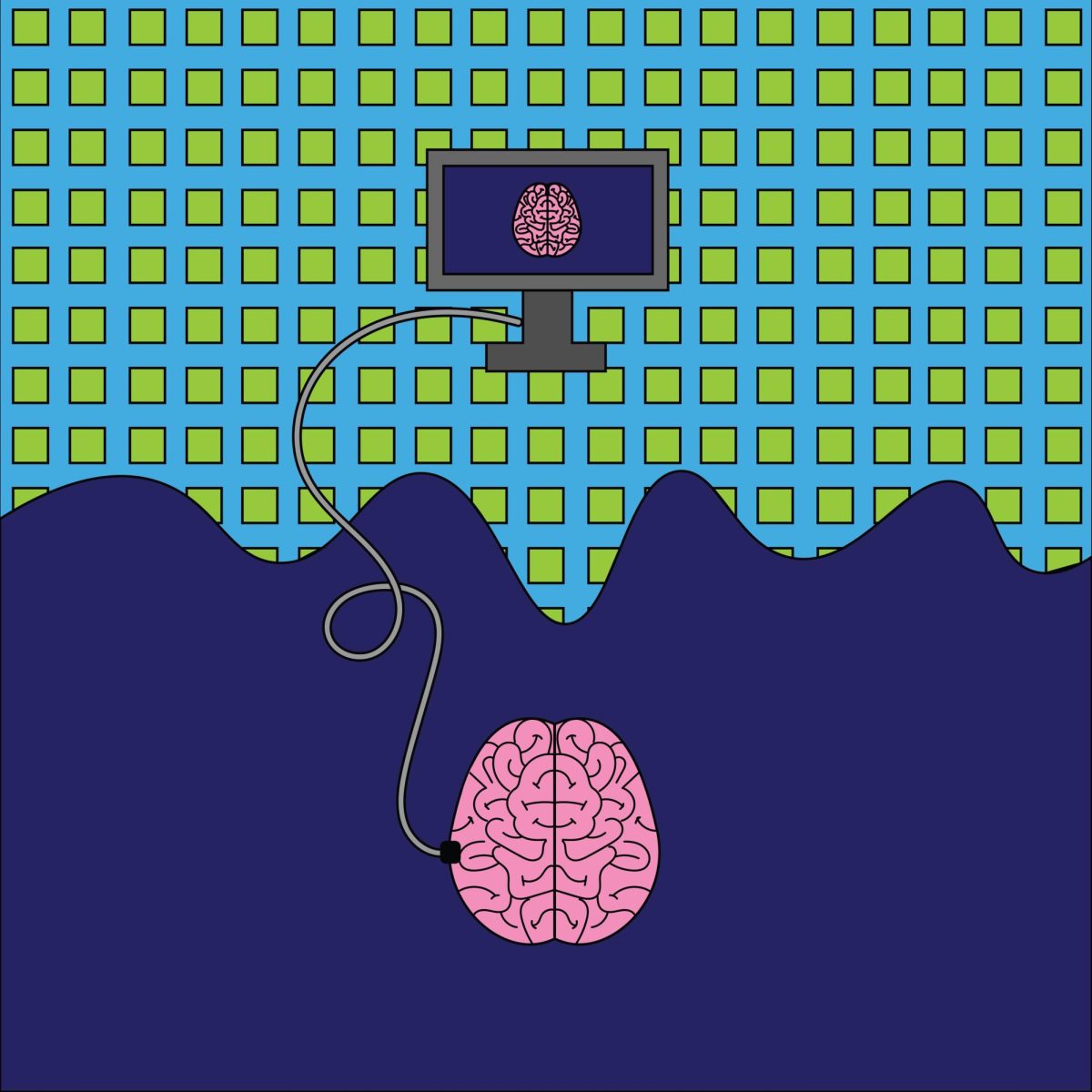On Feb. 2, 2010, the members of the Morgridge Center Advisory Board received an e-mail informing them the board had been “temporarily suspended” by the Morgridge Center staff.
The board had not convened in almost a year and then had departed on shaky terms in the wake of foundational changes for the center. Now, the note stated, there would be no meeting for the entire 2009-10 academic year, and the serious reconsideration of the board’s structure was underway.
The e-mail notification, sent from Mary Rouse, former Morgridge Center director and onetime University of Wisconsin Dean of Students, began with an apology.
“Please accept my apologies for an oversight on my part. … When I looked back through my e-mails, I realized I hadn’t informed you,” Rouse wrote.
The message came as a complete surprise to UW history professor John Sharpless, who is in the middle of his second year on the Advisory Board.
“We didn’t meet in the fall and there was no sign we were going to meet this semester, and suddenly out of the blue, this letter came from Mary Rouse,” Sharpless said.
Sharpless’s complaint was not with Rouse, whom he calls “the Mother Teresa of the center,” but with the lack of openness and communication on the part of the center’s staff.
The exchange regarding the board’s suspension was typical of the relationship between the center and its board, Sharpless said. Now, in the face of administrative changes and fundraising pressures, the Morgridge Center is left to reorganize for the future without immediate oversight.
The decisions
The Morgridge Center for Public Service, established as such in 1996 with the help of Rouse and a $5 million grant from the John and Tashia Morgridge family, occupies one rounded brick corner of UW’s Red Gym. Its shelves, filled with color-coded flyers on volunteering programs, fellowships and service learning courses, render clear its mission of community service and outreach.
The Morgridge Center reports to the provost through the office of UW’s Vice Provost for Teaching and Learning Aaron Brower. Through this process and as a member of the center’s suspended board, Brower said he has seen the organization fulfill its initial vision.
“In the first 10, 15 years of the Morgridge Center’s existence, the goal was really to provide a home base for service learning and community-based research for the campus,” Brower said. “In that regard, it was really, really, really successful.”
As a result of that success, Brower said, the center had outgrown its place in the Wisconsin Union.
The Morgridge Center’s current faculty director Michael Thornton agreed.
“We had been talking about it for some time,” Thornton said. “We didn’t quite fit. It was very difficult for the union to support our efforts because in terms of everything we did we just stuck out like a sore thumb.”
In March 2009, the Morgridge Center officially parted with the union and affiliated itself with the School of Human Ecology, though it physically remained in its Red Gym office.
Although Brower indicated the move was academically motivated, Thornton said it was necessary for administrative reasons.
“[The Morgridge Center] needed a home that could support the academic connections better,” Brower said, explaining the center’s goal to enhance its service learning offerings. “It’s also true that there were other administrative advantages, but the main thing was the growth in academic connections.”
Thornton said the union could not offer a financial officer to the center, which took a toll on the center’s staff and resources. For these reasons, he said the primary concern was administration and not academic connections.
“That was an important [reason], but I wouldn’t say it was the main one,” Thornton said. “We could have done that without moving our home.”
The consequences
Meanwhile, the center’s Advisory Board had not been included in making decisions about the move from the union to the SoHE, said Sharpless. When the center staff informed the board in the spring semester of 2009, the announcement reopened an ongoing discussion of the board’s purpose.
“I never got the sense that our approval was required in any way…” Sharpless said. “At Morgridge, it met once a semester and all the decisions had been made, and they were merely informing us what they had done and we’d go home.”
Thornton said the passivity of the board contributed to its suspension.
“It didn’t work as well as we all wanted,” Thornton said. “It was more kind of a board that we merely reported what we were doing to and that’s not a very good board. You want a board that’s active and participates.”
Sharpless did not disagree with Thornton that the board did not function as a decision-making body.
“We were passive, he’s right,” Sharpless said in response. “And I appreciate that he wants to make it active. But it seems to me the board should be part of making it active.”
According to a letter from the Dean of Students’ office in 1995 — at that time led by Rouse — the chancellor called for the center’s initiation with the Morgridge family’s grant, said UW Secretary of the Faculty Joseph Farrenkopf. Farrenkopf’s office works with the Committee on Committees which appoints people to boards across campus.
The letter, Farrenkopf said, confirms the center and its board are university entities with several members appointed by the chancellor and a total of seven students appointed by the Associated Students of Madison and the Wisconsin Union Directorate.
Through contact with Rouse, Farrenkopf said he knew the Morgridge Center did not appoint a board this year and he is unaware of any university regulation that would prevent it from doing so.
The future
Since affiliating with SoHE almost one year ago, the Morgridge Center has taken steps forward, though change has been slow.
“The truth of the matter is, it often takes time for new relationships to gel and for things to move forward,” Brower said. “I actually am pretty pleased with the progress that’s happened so far.”
Another $5 million endowment from the Morgridge family several years ago enabled the center to further enhance its impact, Thornton said. Six months ago, the center hired someone to do community outreach, and just weeks ago hired two half-time employees to do grant writing and resource development.
With funds from those efforts, they hope to attract more faculty to explore service learning opportunities with the Center.
But more faculty involvement is only one component of what Thornton said is a “definite” expansion. Other tentative plans include a Wisconsin Idea fellowship for graduate students and a Community Scholars Program that would involve scholarships for students of color and working class backgrounds in exchange for community service.
Yet the concentration on raising more funds concerns Sharpless, who said he saw a lack of student input at the center during his time on the board.
“They need money and they’ve got this matching challenge from the Morgridge family, and I understand that puts them under pressure,” Sharpless said. “But I get the sense that the staff there is primarily concerned with fundraising and not what the fundraising is indeed about. And that happens to foundations all the time.”
Both Brower and Thornton said the center is considering the replacement of the current board with a national one that could serve as a financial boon to the organization.
“The idea is that service learning is a national movement and there might be some interesting advantages to having alumni from Wisconsin who are now living all over the world or the country connecting once a year or something on a national advisory board,” Brower said.
With the center’s break from the union, the student representation on its board is now gone. Sharpless, who at one point served on the Union Council and the Morgridge Center’s Advisory Board simultaneously, compared the center’s workings to the Union Council’s complex system of checks and balances among its many student committees and with its professional staff.
The differences, he said, were “shocking and apparent.”
“Students have a role to play, and particularly with organizations like the union and the Morgridge Center, they’re all about undergrads,” Sharpless said. “And I didn’t sense that students had an active, ongoing role in the management of the Morgridge Center and they certainly don’t now.
UW senior Laura Egli served on the center’s board from spring 2007 until spring 2009, one of seven student board members and one of four appointed by ASM.
“I would say when I first started, [the board] was more passive,” Egli said. “At the last few meetings, there was a lot more input as to when we first started, which I think was really valuable.”
Egli said she was informed by ASM in the fall that the center did not appoint a board for this academic year. Even so, she feels that student involvement in the Center is at a peak.
“Every year it seems like [students] get more involved,” Egli said, pointing out the 18 student positions within the Morgridge Center, including student liaisons and outreach positions. “I think students have a big role in the Morgridge Center.”
Thornton said the future management role for students at the center has yet to be determined.
“If we have a local board, then yes, of course (there will be student representation),” Thornton said. “But if we have a national board, then I’m not sure where students would fit into that.”
Farrenkopf said the Morgridge Center is within its rights to restructure the board without students.
“In this reorganization, if they choose to redefine the membership then they can do that,” Farrenkopf said.
Egli said the center would not be quick to exclude students from its management.
“I feel like they would look into that before they would just start this new (national) board without any student input, because they’re for the students,” Egli said. “They’re very student-centered.”
Now retired as director, Rouse still works part time in the Morgridge Center and said students are extremely involved at the office, working as administrative assistants and providing guidance to other students as service learning fellows. She said there is no question about student involvement on a future board.
“We absolutely will include a very heavy presence of students,” Rouse said.
She added the center hasn’t had time to digest its research on the topic, but may consider a model with several boards, both on the local and national level.
Although frustrated by what he sees as a lack of focus and a de-prioritization of student involvement, Sharpless is clear he is not challenging the overall integrity of the center or its staff.
“I don’t suspect any skullduggery here,” Sharpless said. “I think its more a product of drift than intent.”













